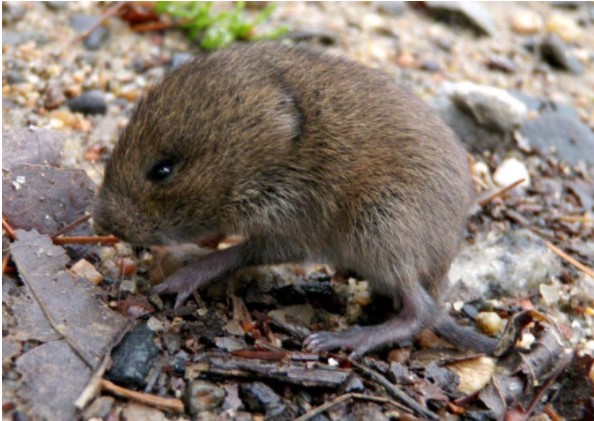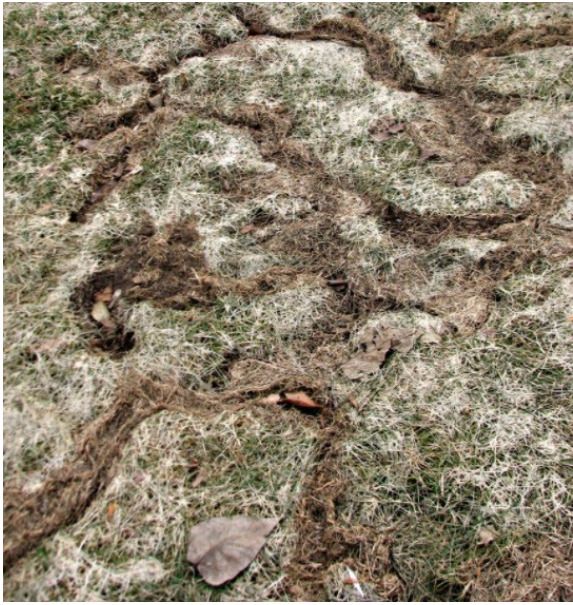
Photo by April Lueck – MN PCA
They may be small, but they can do some mighty damage to your small trees and shrubs. Your lawn too. Voles, aka field mice, chew on the bark of those small shrubs and trees and make trails in your lawn as they eat grass and roots. They look a lot like mice, but they have short tails and little ears.

Vole trails photo by University of Wisconsin Ext.
About:
- There are 5 types of voles in Minnesota. The Meadow vole is the most common throughout the state and the one you may find doing the damage.
- Vole damage is often observed in late winter and early spring right after the snow melts and their runways are exposed.
- Voles do the most harm to small trees and shrubs.
- While they don’t live long, a female vole can have 5 to 10 litters a year producing 3 to 5 young each time.
- The University of Minnesota Extension has more details on their life cycle, damage and more.
What to do organically:
- General yard sanitation such as removing wood piles and other debris where they can hide and/or make a home.
- Prune low branches of shrubs and trees to prevent chewing.
- Don’t put mulch right up next to the trunk of your plants. It's a great hiding spot for voles. Always remember: “Donut not Volcano” when placing mulch.
- Clean up under bird feeders.
- Tree guards should be high enough to reach above the snow line. Make sure that the tree guard does not restrict the tree and either bury the base or mound soil up around it.
Repelling them with organic compounds or trapping:
- Plantskydd comes in liquid, powder or granules. It is 100% dried blood (porcine and/or bovine). No animal parts. It is not harmful but “smells” like a predator. The granules can last up to 3 months, even in rain.
- Shake-Away coyote and fox urine.
- Mole Max is people and pet safe when used as directed. Its active ingredient is castor oil.
- Standard mousetraps can be placed along their runways. Use peanut butter and make sure to cover the traps to keep curious kids and pets away.
